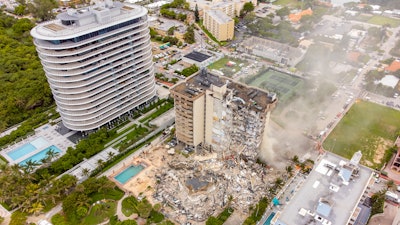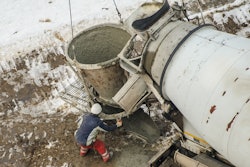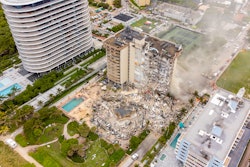
Way back in September, I wrote about how different climates affect concrete. I did not mention the Surfside Condominiums tragedy north of Miami last July, in which a 12-story concrete building collapsed, killing 98 people and injuring a dozen others. Because of the building’s location, there continues to be a lot of speculation about what role, if any, was played by climate change and extreme weather.
I’ll address that now.
According to Wikipedia, engineers investigating the Surfside tragedy are eyeing “long-term degradation of reinforced concrete structural support...due to water penetration and corrosion of the reinforcing steel.” Degradation is most likely a reference to spalling, which ConcreteNetwork.net defines as “a common problem where part of the surface peels, breaks or chips away.” But how could spalling have caused a 12-story concrete structure to collapse in seconds?
Here’s a theory that’s been gaining acceptance, from the popular real-estate website, Curbed:
"If the spalling had compromised structural columns, it’s possible that saltwater intrusion — which has increased in recent years owing to sea-level rise — might have seeped into the columns, rusting and weakening the steel rebar that strengthens the concrete."
No surprise that seaside buildings, particularly those in hurricane alleys like Southern Florida, would be vulnerable to rising sea levels. Some experts have gone so far as to suggest that no concrete building is prepared for the combination of more frequent hurricanes and rising sea levels wrought by climate change. Water can make for a devastating corrosive, and saltwater even more so. Add to that the effects from being battered by high winds and storm surges for decades, and, well, you get the idea.
High wind speed and high concrete temperature are two of the conditions that tend to impair the quality of freshly-mixed or hardened concrete, primarily by accelerating the rate of moisture loss and rate of cement hydration.
Weather conditions are rarely ideal. What makes them extreme? And what makes them extreme enough to cause structural concern? In October 2021, the American Concrete Institute held a committee meeting “to assess, model and document the influence of global climate change on the sustainability of concrete structures.” The stated goal is “to develop solutions to impede and control deterioration in concrete structures caused by global climate change.” I’ll share the ACI’s conclusions as soon as they’re made public. In the meantime, we do have some clues from a paper published seven years ago in Urban Climate by civil engineer Matthew Eckelman and a graduate student named Mithun Saha.
Their two key conclusions were:
Anthropogenic increases in atmospheric greenhouse gas (GHG) concentrations and resultant changes in climate will have significant detrimental effects to urban infrastructure, from both extreme events and longer-term processes.
Current concrete construction projects will experience carbonation and chlorination depths that exceed the current code-recommended cover thickness by 2077 and 2055, respectively, well within the lifetimes of these buildings, potentially requiring extensive repairs.
The Boston Globe later reframed Eckelman and Saha’s findings in more alarming terms. “It’s not rising seas that will get us first,” the Globe asserted. “It’s collapsing concrete.” Considering that the Surfside Condo fell 40 years after it was built, the researchers’ observation that concrete buildings won’t meet safety codes in 41 years due to climate change is prescient stuff. (It’s believed that the Surfside’s demise was accelerated by water leaks around the foundation.)
Back in September, I observed: “Concrete is an especially delicate material. Unbeknownst to many people, it is not only affected by extreme temperatures, but also by humidity levels, as well as the velocity and intensity of the wind. Working with concrete demands skill and patience. It requires both the expertise of those working with concrete, as well as the cooperation of environmental factors in order to produce a smooth, strong, properly cured structure.”
My first piece on how climate affects concrete was written primarily towards the pouring/placement of concrete, and it may well turn out that the Surfside’s builder did not follow proper construction procedures, dooming the building (and its residents) from the start. But it’s clear that climate change and extreme weather pose a one-two threat to concrete buildings, even after construction and no matter how well-built they appear to be.
About the author
Matt DiBara is a fourth-generation mason of DiBara Masonry and the creator of The Undercover Contractor, a resource for educating homeowners on how to find, vet, hire and manage contractors. He has his team have become committed to ending miseducation and debunking myths that are spread to everyday homeowners. He has worked on some of the most prestigious and well-known celebrity homes in the city of Los Angeles, in addition to restoring several of Hollywood's most famous cultural landmarks. Matt is passionate about educating homeowners and empowering them with in-depth industry insight.



















